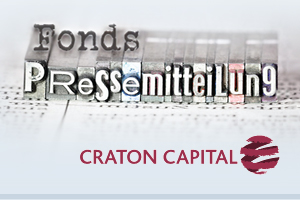Please find below the links to the Craton Capital Funds newsletters for the month of July 2016.
Craton Capital Precious Metal Fund (ISIN: LI0016742681; BBG CRMETAL LE)
The gold price reached a 3-year high during July as global markets contemplated the effects of the Brexit vote. Time will tell whether or not the vote and uncertainties will hurt economic growth. For now we note only that monetary policy is likely to become (or remain) more accommodative in most affected countries, including the US. This will further support gold in the medium term.
The Fund returned 13.3% in July against the benchmark of 8.9%. Precious metal companies’ results for the June quarter gave us an insight into the continued operational turnaround in the sector. Overall gold production was in line with expectations and many companies continued to deliver further cost improvements. Average All-in Sustaining Costs remain controlled. The stronger gold price in Q2 provided a significant boost to Free Cash Flow for many producers. As the quarter average gold price of US$1260/oz is lower than current levels, this bodes well for Q3 results. Moving into autumn, gold may get further support from Asian physical demand (historically much stronger in the second half of the year). Gold miners have shown the strong cash flow leverage to rising gold prices. The combination of these factors makes for a very attractive outlook for the precious metals sector. (View as PDF)
Craton Capital Global Resources Fund (ISIN: LI004389073; BBG CRGRESA LE)
The Craton Capital Global Resources Fund returned 16% in July, extending June’s gains and outperforming against the index return of around 2%. The strong performance was driven by the Fund’s high exposure to zinc producers, which showed stellar returns, as well as diversified miners holdings.
Global manufacturing activity has slowed slightly, although remains within expansion territory and above last year’s low levels, driven mainly by weaker data out of the US, the Eurozone and the UK. China data was rather mixed and overall flat month on month. Overall, economic data shows a much better environment than 12 months ago.
The current reporting season is seeing positive surprises from many producers, with improvements in operational efficiencies, balance sheets and free cash flow generation – a clear, pleasing contrast against the dismal expectations of less than 12 months ago. We believe the operational and financial improvements will continue, even if commodity prices only trend sideways. This should see the sector enjoy a better rating and a strong base for future dividend payments. In the current yield-hungry market environment, this outcome underpins the compelling and attractive investment case for the sector. (View as PDF)
The Craton Capital Team
[NOTE: Kindly do not respond to this email address as it comes from an unattended mail box.]
Craton Capital
Suite C201
33 Fricker Road
Illovo Boulevard
Illovo 2196
South Africa
Tel: +27 11 771 6260
Fax: +27 11 771 6270
info@cratoncapital.com
www.cratoncapital.com
This e-mail and any file attachments transmitted with it are intended solely for the addressee(s) and may be legally privileged and/or confidential. If you have received this e-mail in error please destroy it. If you are not the addressee you may not disclose, copy, distribute or take any action based on the contents hereof. Any unauthorized use or disclosure is prohibited and may be unlawful.
Please refer to http://www.cratoncapital.com/disclaimer_en.html for important disclaimer information.
Copyright © 2016 Craton Capital, All rights reserved.



